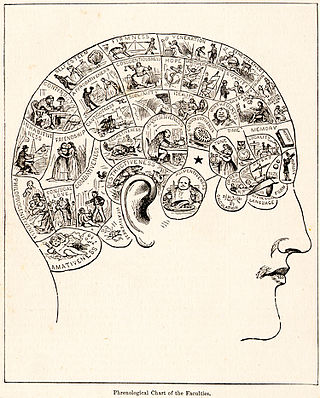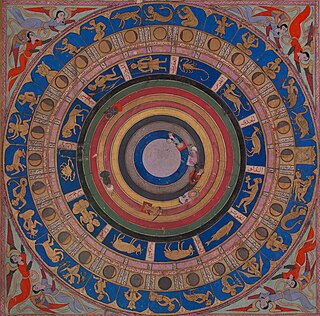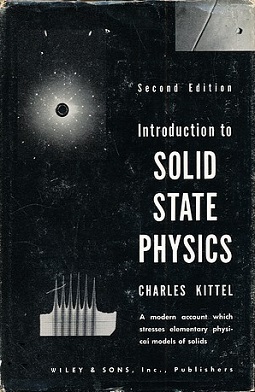
Astrology is a range of divinatory practices, recognized as pseudoscientific since the 18th century, that claim to discern information about human affairs and terrestrial events by studying the apparent positions of celestial objects. Different cultures have employed forms of astrology since at least the 2nd millennium BCE, these practices having originated in calendrical systems used to predict seasonal shifts and to interpret celestial cycles as signs of divine communications. Most, if not all, cultures have attached importance to what they observed in the sky, and some—such as the Hindus, Chinese, and the Maya—developed elaborate systems for predicting terrestrial events from celestial observations. Western astrology, one of the oldest astrological systems still in use, can trace its roots to 19th–17th century BCE Mesopotamia, from where it spread to Ancient Greece, Rome, the Islamic world, and eventually Central and Western Europe. Contemporary Western astrology is often associated with systems of horoscopes that purport to explain aspects of a person's personality and predict significant events in their lives based on the positions of celestial objects; the majority of professional astrologers rely on such systems.

Pseudoscience consists of statements, beliefs, or practices that claim to be both scientific and factual but are incompatible with the scientific method. Pseudoscience is often characterized by contradictory, exaggerated or unfalsifiable claims; reliance on confirmation bias rather than rigorous attempts at refutation; lack of openness to evaluation by other experts; absence of systematic practices when developing hypotheses; and continued adherence long after the pseudoscientific hypotheses have been experimentally discredited.

A horoscope is an astrological chart or diagram representing the positions of the Sun, Moon, planets, astrological aspects and sensitive angles at the time of an event, such as the moment of a person's birth. The word horoscope is derived from the Greek words ōra and scopos meaning "time" and "observer". It is claimed by proponents of astrology that a horoscope can be used as a method of divination regarding events relating to the point in time it represents, and it forms the basis of the horoscopic traditions of astrology, although practices surrounding astrology have been recognized as pseudoscientific since the 18th century. Horoscope columns are often featured in print and online newspapers.

Western astrology is the system of astrology most popular in Western countries. Western astrology is historically based on Ptolemy's Tetrabiblos, which in turn was a continuation of Hellenistic and ultimately Babylonian traditions.
Hindu astrology, also called Indian astrology, Jyotisha or Jyotishya, and more recently Vedic astrology, is the traditional Hindu system of astrology. It is one of the six auxiliary disciplines in Hinduism that is connected with the study of the Vedas.
"The Amateur Scientist" was a column in the Scientific American, and was the definitive "how-to" resource for citizen-scientists for over 72 years (1928–2001), making it the longest running column in Scientific American's history. The column was regarded for revealing the brass-tacks secrets of research and showing home-based experimenters how to make original discoveries using only inexpensive materials. Since its début in 1928, "The Amateur Scientist" was a primary resource for science fair projects. It also inspired amateur experimenters, launched careers in science, and enjoyed a place of honor in classrooms and school libraries all over the world.

Electional astrology, also known as event astrology, is a branch found in most traditions of astrology according to which a practitioner decides the most appropriate time for an event based on the astrological auspiciousness of that time. It differs from horary astrology because, while horary astrologers seek to find the answer to a question based on the time the question was asked, electional astrologers seek to find a period of time which will result in the most preferable outcome for an event being planned.
In philosophy of science and epistemology, the demarcation problem is the question of how to distinguish between science and non-science. It also examines the boundaries between science, pseudoscience and other products of human activity, like art and literature and beliefs. The debate continues after more than two millennia of dialogue among philosophers of science and scientists in various fields. The debate has consequences for what can be termed "scientific" in topics such as education and public policy.

Astrology and astronomy were archaically treated together, but gradually distinguished through the Late Middle Ages into the Age of Reason. Developments in 17th century philosophy resulted in astrology and astronomy operating as independent pursuits by the 18th century.

Natal astrology is also known as Genethliacal Astrology, which implies nativity. It is a system of astrology that claims to shed light on an individual’s personality or path in life. This concept is based on constructing a horoscope or natal chart that includes the exact date, time, and location of an individual's birth. Natal astrology is found in the Indian or Jyotisha, Chinese and Western astrological traditions.

Psychological astrology, or astropsychology, is the result of the cross-fertilisation of the fields of astrology with depth psychology, humanistic psychology and transpersonal psychology. There are several methods of analyzing the horoscope in the contemporary psychological astrology: the horoscope can be analysed through the archetypes within astrology or the analyses can be rooted in the psychological need and motivational theories. There might exist other astrological methods and approaches rooted in psychology. Astrologer and psychotherapist Glenn Perry characterises psychological astrology as "both a personality theory and a diagnostic tool".

Sun sign astrology, or star sign astrology, is a modern simplified system of Western astrology which considers only the position of the Sun at birth, which is said to be placed within one of the twelve zodiac signs, rather than the positions of the sun and the other six 'planets'. This sign is then called the sun sign or star sign of the person born in that twelfth-part of the year. Sun sign astrologers take this basic twelve-fold division and relate all the current movements of all the planets to each other, using traditional rules to divine meanings for each sign separately. Because the Moon has the fastest apparent movement of all the heavenly bodies, it is often used as the main indicator of daily trends for sun sign astrology forecasts.
Paul McEuen is an American physicist. He received his B.S. in engineering physics at the University of Oklahoma (1985), and his Ph.D. in applied physics at Yale University (1991). After postdoctoral work at MIT (1990–1991), he became an assistant professor at the University of California, Berkeley. He moved to Cornell University in 2001, where he is currently the Goldwin Smith Professor of Physics. He is one of the experts on the electrical property of carbon nanotubes and is a member of the National Academy of Sciences.

Some medieval Muslims took a keen interest in the study of astrology, despite the Islamic prohibitions partly because they considered the celestial bodies to be essential, partly because the dwellers of desert-regions often travelled at night, and relied upon knowledge of the constellations for guidance in their journeys. After the advent of Islam, the Muslims needed to determine the time of the prayers, the direction of the Kaaba, and the correct orientation of the mosque, all of which helped give a religious impetus to the study of astronomy and contributed towards the belief that the heavenly bodies were influential upon terrestrial affairs as well as the human condition. The science dealing with such influences was termed astrology, a discipline contained within the field of astronomy. The principles of these studies were rooted in Arabian, Persian, Babylonian, Hellenistic and Indian traditions and both were developed by the Arabs following their establishment of a magnificent observatory and library of astronomical and astrological texts at Baghdad in the 8th century.
Locational astrology is any of various types of astrology that factor in specific locations of the Earth. The different types also carry a range of astrological techniques.
The Society for Amateur Scientists (SAS) was a non-profit 501(c)(3) organization dedicated to "helping ordinary people do extraordinary science". It was the first organization ever created for the generalists of citizen science. Rather than supporting a narrow interest, such as amateur astronomy or archeology, SAS supported amateur research into all fields of science and in so doing, it helped to launch the modern citizen science movement.
Pushpa Mittra Bhargava was an Indian scientist, writer, and administrator. He founded the Centre for Cellular and Molecular Biology, a federally funded research institute, in Hyderabad. He was outspoken and highly influential in the development of scientific temper in India, and argued that scientific rationalism needed to be cultivated as a civic duty.

Astrology consists of a number of belief systems that hold that there is a relationship between astronomical phenomena and events or descriptions of personality in the human world. Astrology has been rejected by the scientific community as having no explanatory power for describing the universe. Scientific testing has found no evidence to support the premises or purported effects outlined in astrological traditions.

Katherine "Kathy" Anne Yelick, an American computer scientist, is the vice chancellor for research and the Robert S. Pepper Professor of Electrical Engineering and Computer Sciences at the University of California, Berkeley. She is also a faculty scientist at Lawrence Berkeley National Laboratory, where she was Associate Laboratory Director for Computing Sciences from 2010-2019.

Introduction to Solid State Physics, known colloquially as Kittel, is a classic condensed matter physics textbook written by American physicist Charles Kittel in 1953. The book has been highly influential and has seen widespread adoption; Marvin L. Cohen remarked in 2019 that Kittel's content choices in the original edition played a large role in defining the field of solid-state physics. It was also the first proper textbook covering this new field of physics. The book is published by John Wiley and Sons and, as of 2018, it is in its ninth edition and has been reprinted many times as well as translated into over a dozen languages, including Chinese, French, German, Hungarian, Indonesian, Italian, Japanese, Korean, Malay, Romanian, Russian, Spanish, and Turkish. In some later editions, the eighteenth chapter, titled Nanostructures, was written by Paul McEuen. Along with its rival Ashcroft and Mermin, the book is considered a standard textbook in condensed matter physics.





